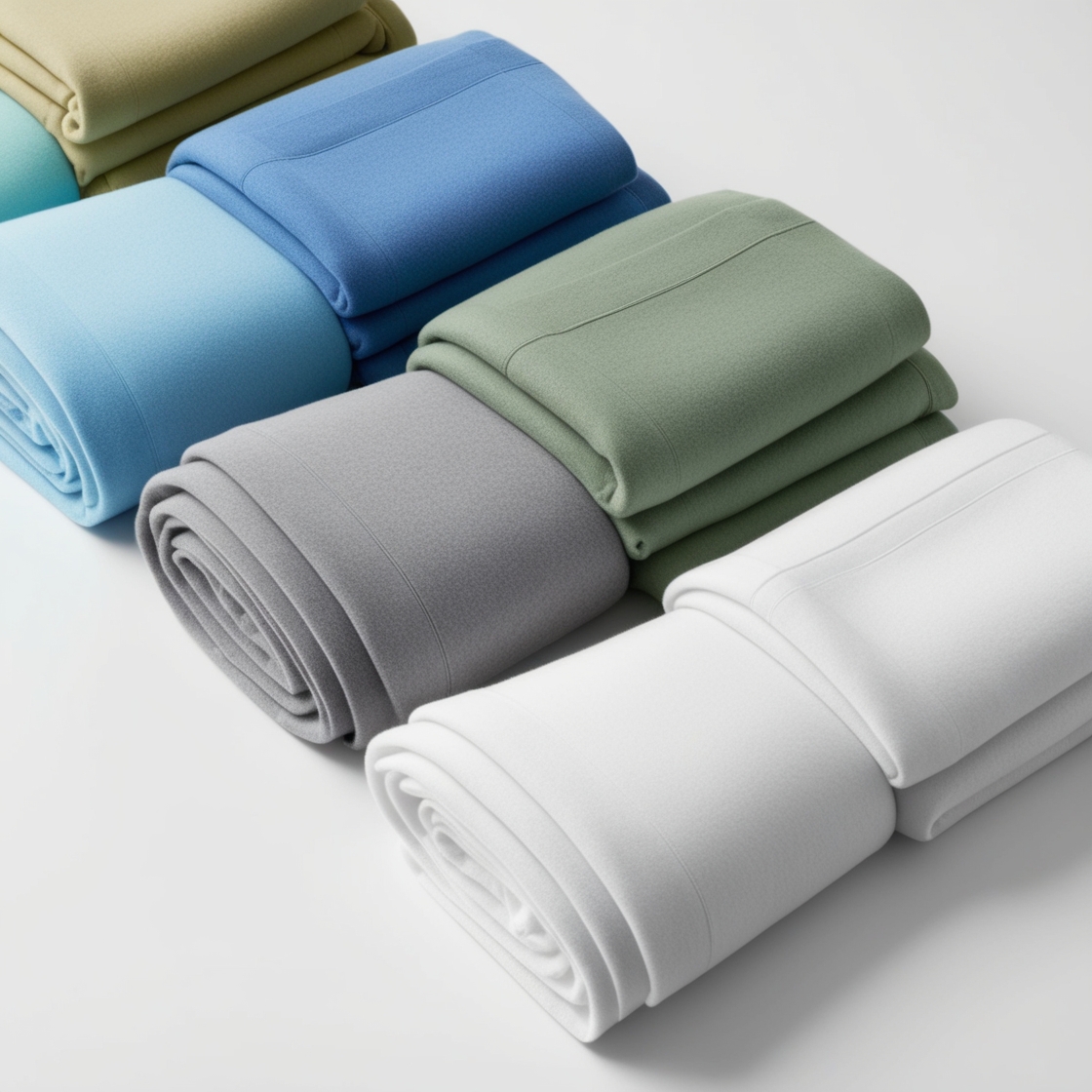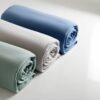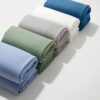-
×
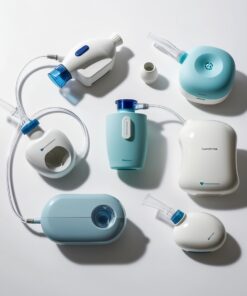 nebulizer mouthpiece
1 × R804.59
nebulizer mouthpiece
1 × R804.59 -
×
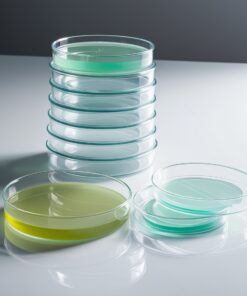 dish petri
1 × R55.00
dish petri
1 × R55.00 -
×
 playboy blanket pink
1 × R397.11
playboy blanket pink
1 × R397.11
bed sheet in hospital
R128.01 Ex VAT
Uses: These blankets are used to prevent pressure ulcers and to maintain airflow in bedridden patients, particularly in ICU or long-term care settings.
Category: Hospital Blankets
Hospital sheets, often referred to as medical linens, are a critical component in healthcare settings for maintaining hygiene, patient comfort, and infection control. Different types of hospital sheets serve various purposes depending on the specific needs of the hospital and patients. Below are the common types and uses of hospital sheets:
1. Fitted Sheets
- Type: Elasticized sheets that snugly cover the mattress.
- Uses:
- Fitted sheets are designed to fit securely over hospital mattresses to prevent slipping and bunching.
- They offer comfort to patients by providing a smooth surface.
- Protects the mattress from bodily fluids, dirt, and bacteria.
- Commonly used on patient beds in wards, ICUs, and emergency rooms.
2. Flat Sheets
- Type: Standard rectangular sheets that lie flat on top of the mattress or other linens.
- Uses:
- Flat sheets are typically used as the top layer on patient beds.
- They provide a clean, soft barrier between the patient and blankets or other coverings.
- Often used in combination with fitted sheets for added comfort and cleanliness.
- Used in various hospital settings, including general wards, outpatient facilities, and surgical recovery areas.
3. Draw Sheets
- Type: Smaller sheets placed horizontally across the middle of the bed, under the patient’s torso.
- Uses:
- Used to reposition and transfer patients with limited mobility without causing discomfort or injury.
- Helps caregivers move patients easily by reducing friction between the sheet and the bed.
- Commonly found in ICU, geriatric care, and long-term care facilities.
4. Incontinence Sheets (Bed Pads)
- Type: Waterproof or absorbent sheets placed on top of regular bed linens.
- Uses:
- Protects the mattress and bedding from moisture and incontinence-related incidents.
- Helps maintain hygiene by absorbing fluids and reducing the need to constantly change bedding.
- Used for patients with incontinence issues, commonly in geriatric, post-surgical, or critical care settings.
- Available as washable or disposable options.
5. Disposable Sheets
- Type: Single-use sheets made from non-woven materials or paper-like fabric.
- Uses:
- Designed for one-time use to reduce the risk of cross-contamination and infections.
- Often used in high-risk areas like operating rooms, emergency rooms, or isolation wards.
- Disposable sheets are ideal for quick patient turnover and when hygiene is paramount.
6. Stretcher Sheets
- Type: Sheets sized specifically for stretchers and gurneys, often smaller than standard bed sheets.
- Uses:
- Used on stretchers to keep patients comfortable and maintain hygiene during transport.
- Typically disposable for easy and quick replacement between patients.
- Common in emergency departments, operating rooms, and ambulance services.
7. Thermal Blankets
- Type: Lightweight, heat-retentive blankets.
- Uses:
- Provides warmth to patients in recovery rooms or post-surgical environments.
- Often used in combination with flat or fitted sheets to help regulate patient body temperature.
- Commonly used for post-operative patients, elderly patients, and those at risk of hypothermia.
8. Reusable Sheets
- Type: Cotton or polyester-blend sheets that can be washed and reused multiple times.
- Uses:
- These are the standard sheets used in most hospital wards for patient comfort and protection.
- Environmentally friendly and cost-effective as they can be washed and reused multiple times.
- Reusable sheets are typically used in general care units, long-term care facilities, and outpatient clinics.
9. Pressure-Relieving Sheets
- Type: Sheets made from materials designed to reduce friction and pressure on the patient’s skin.
- Uses:
- Used for patients who are bedridden for long periods to prevent pressure ulcers (bedsores).
- Commonly used in ICU, long-term care, or in patients with limited mobility.
- These sheets help reduce the friction between the patient’s skin and the bed, enhancing comfort and safety.
10. ICU or Critical Care Sheets
- Type: Specialized sheets often made from anti-static, hypoallergenic, and antimicrobial materials.
- Uses:
- Designed for patients in critical care units where infection control and patient safety are priorities.
- Often combined with other protective linens like incontinence pads or disposable sheets.
- Provides additional protection for immunocompromised patients or those recovering from major surgeries.
11. Maternity Sheets
- Type: Absorbent and water-resistant sheets.
- Uses:
- Used during labor and post-partum care to handle bodily fluids and provide extra protection for mattresses.
- Helps in maintaining cleanliness during delivery and the early recovery period.
- Often used in labor and delivery rooms as well as maternity wards.
Key Features of Hospital Sheets:
- Durability: Hospital sheets are made to withstand frequent washing and sterilization, especially in healthcare environments with high turnover.
- Infection Control: Many sheets, particularly those in high-risk areas like ICUs, are treated with antimicrobial properties or made from materials that inhibit the growth of bacteria, helping to reduce the spread of infections.
- Comfort and Breathability: Sheets, especially those made from cotton or cotton blends, are designed to be comfortable for patients, allowing air circulation and moisture-wicking to maintain a dry surface.
- Fluid Resistance: Incontinence pads or sheets with fluid-resistant properties help protect the patient and bed from spills, bodily fluids, and incontinence, maintaining a hygienic environment.
- Hygiene and Safety: Hospital linens, especially disposable sheets, help control the spread of infections and reduce cross-contamination, a critical aspect in operating rooms and intensive care units.
These different types of hospital sheets each serve a specific role in maintaining cleanliness, promoting patient comfort, and ensuring the smooth operation of hospital care procedures.
10. Gurney or Stretcher Blankets
Related products
Hospital Blankets
R280.11 Ex VAT
Hospital Blankets
R288.66 Ex VAT
Hospital Blankets
R408.36 Ex VAT
Hospital Blankets
R335.91 Ex VAT
Hospital Blankets
R405.21 Ex VAT
Hospital Blankets
R397.11 Ex VAT
Hospital Blankets
R292.26 Ex VAT
Hospital Blankets
R412.41 Ex VAT
